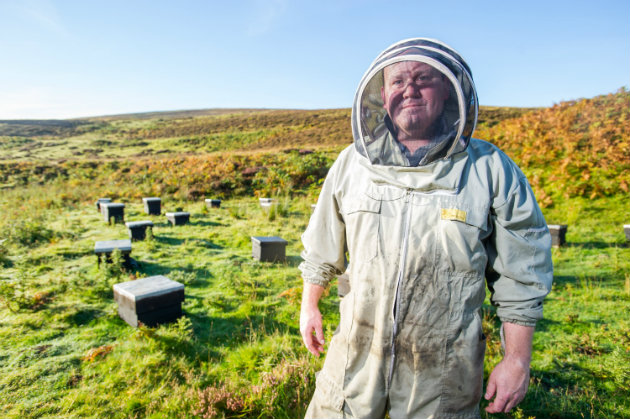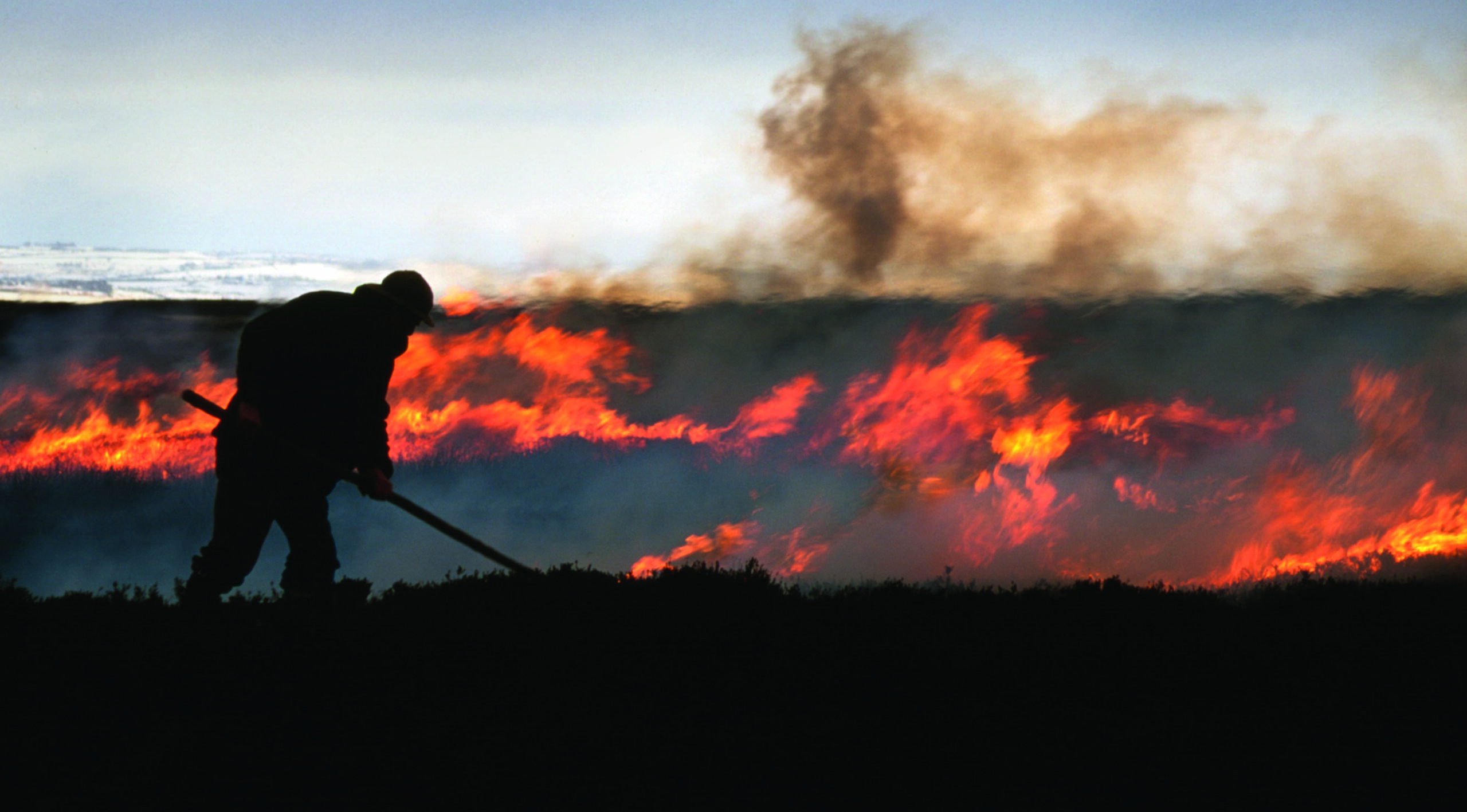Managed heather moorland helps Scottish honeybees thrive
Rural estates are reporting increased bee numbers on moorland, attracted by Scotland's heather

Beekeeper Stuart Hood
Across parts of Scotland honeybees and honey producers are flourishing thanks to the red grouse, going some way to counter concerns of a bee decline across the country – with the poor summer this year not helping the situation.
Heather is central to the red grouse’s diet
There are encouraging reports of bees thriving on moorland estates, which is encouraging. Heather moorland is most prominent on grouse managed moorland, where heather is a central part of the red grouse’s diet.
Beekeepers on estates in Tayside and Angus Glens are seizing this opportunity to position their hives on estates to increase the production of heather honey, fast becoming a famed Scottish food product to rival the acclaimed manuka honey.
International demand for Scottish heather honey
In the Lammermuir Hills sporting estates have been hosting honeybees producing heather honey that is in international demand.
On two of the region’s estates – Hopes Estate and Mayshiel Estate – hives are placed every August and September. The honeybees access the heather, producing a unique type of honey that contains three sugars instead of the standard two.
At this time of year, the hives are moved from the estate in order for honey production to begin, which has already begun to hit shelves at home and abroad.

Ian Elliot, Head Gamekeeper on the Hopes Estate, with Beekeeper Stuart Hood, who keeps a number of Hives on the Hopes Estate, near Duns
Ian Elliott, head gamekeeper at Hopes Estate, and part of the Lammermuirs Moorland Group, said: “The moorland heather, which is maintained to the highest standard as part of the integrated management of the estate, is favoured by beekeepers due to its rotational renewal. The heather is burned in strips in accordance with the Muirburn Code, which leads to its regeneration and more vigourous flowering and pollination which is perfect for the honeybees to access.
“We have hosted hives on the moor for decades and it adds another layer of biodiversity to the estate. We are delighted to work in partnership with local honey producers and it is exciting from our point of view that we can play a small role in creating a Scottish food product that is in demand around the world.”
Scottish honey endorsed by Great British Bake Off judge
One of the businesses working with estates in the Lammermuir Hills is Hood’s Honey, which has been used and endorsed by Great British Bake Off judge Paul Hollywood, who has promoted it in some of his recipes.
For Stuart Hood, owner of Hood’s Honey, commented: “The estates have always been very welcoming to us and without the access to the heather then our business would not be thriving in the manner that it is. We move all of our hives, each containing around 65 to 75,000 bees, onto the estates where the bees can feed off the finest of heather that is in full bloom.
“That allows us to produce honey that has a unique flavour, and captures the taste of the peaty soil in the region. Without the work of the gamekeepers, we wouldn’t be able to achieve this. It is often said that grouse shooting estates are inaccessible or are solely there for the grouse. It certainly isn’t the case in my experience, and the gamekeepers work hard to ensure that everything can flourish on the estates – including the heather for our bees.
“The honey is in international demand, and this week we’ve had new requests from Pennsylvania for the product. Demand outstrips supply, but thanks to our work with the estates we are able to produce a product that is unique to Scotland.
“Despite the perception that estates are set apart from the community, nothing could be further from the truth for us. Everyone from the owners to gamekeepers to other estate staff are keen to see our business, and others in the community, flourish.”
Moorland provides the perfect location for bees
That view is echoed by Gavin Ramsay, the Scottish Beekeepers Association’s Science Officer.
Gavin said: “Beekeepers are working with estates across Scotland, and find them extremely welcoming to the work we do and to hives being placed on moorland.
“At a time of year when bees can struggle to find sufficient forage elsewhere, moorland provides the perfect location for bees. There is an undoubted health benefit for the bees arising from well-provisioned colonies bustling with young bees raised on managed heather moors. That contrasts with colonies left in the arable lowlands at sites where there is little forage in August most years and where bees may need fed to thrive.
“There is an appreciation in the beekeeping community of those who committed to preserving a habitat such as heather moorland that can be at risk in other areas due to overgrazing and climate change. It also helps us to continue and preserve the old tradition of transhumance – moving your stock to the hills for the late summer forage – which is something that beekeepers value highly.”








